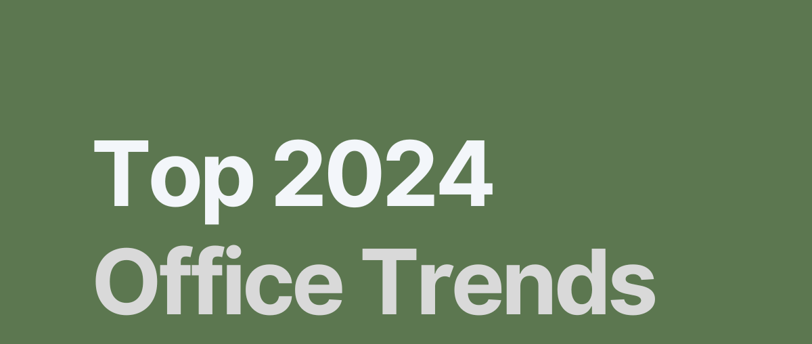2024 Office Design Trends
Top 2024 office design trends so far. I covered some key information anyone could implement and the reason why you might want to.
Lea Udrescu
9/20/20242 min read


A quick google search will say the 2024 office trends are:
Hybrid workspaces
Biophilic design
Smart tech integration
Modular furniture
Sustainability
Increased flexibility and catering for hybrid working
Wellness and sustainability
Integration of technology
A Bit of Theory & History
These trends are not a result of Covid-19, they have been slowly developing over decades to what we know to be today. After the oil crisis in the 1970s, the importance of energy conservation was initiated through the introduction of energy-efficient lighting and HVAC systems. In the late 1990s, green building standard guides like BREEAM (Building Research Establishment Environmental Assessment Method) and LEED (Leadership in Energy and Environmental Design) emerged to set out concise outcomes of sustainable development. Around the 2000s renewable energy sources and smart building technologies started to shape up. In 2020, an emphasis on wellbeing and sustainability became the new trend, even though these concepts have been floating around since the 1960s.
What Are the Advantages of These Trends?
- It focuses on better working conditions
- It gives the employees more incentive to work harder
- It creates a positive reputation for the business
- It attracts attention and gives a competitive edge
- It lowers employee stress and improves engagement
- It attracts top talent
- Indirectly, it impacts profit and revenue
Let’s Talk Statistics:
1.8 million workers in Great Britain suffered from work-related stress, depression, or anxiety from 2022-2023 (Labour Force Survey, 2022-2023)
35% of employees say lack of control is the cause of stress and unhappiness at work (UK Employee Happiness Statistics, 2022)
49% of UK workers experience reduced productivity and fatigue (UK Employee Happiness Statistics, 2022)
Happy workers are 13% more productive (Research by Oxford University, 2019)
The average office worker is productive for only 3 hours a day (self-reports from nearly 2000 full-time employees, 2018)
52% of respondents are more productive when not working in a noisy office environment (Udemy Workplace Distraction Report, 2018)
It takes workers approximately 23 minutes to refocus on a task after getting distracted (Study by Gloria Mark, University of California, 2008)
53% of employees say workplace noise harms their productivity (Oxford Economics Survey, 2015)
76% of employees avoid working in the office when they need to focus and get important work done (FlexJobs Survey, 2015)
What Can You Do to Improve Your Office?
Large Impact Improvements:
Reduce noise and distractions
Introduce nature and natural elements
Provide a variety of spaces (from focused spaces to collaborative spaces, allow for different levels of interaction)
Improve comfort through temperature control systems, ergonomic furniture, ambient lighting
Maximise natural lighting and ventilation
Medium Impact Improvements:
Introduce inclusive design (prayer rooms, meditation spaces, quiet rooms)
Add multi-functional spaces (gyms, nap pods, massage rooms, games lounges, cafes, outdoor spaces and hidden lounges)
Opt for colour pallet choices that improve mood and motivation levels (neutrals, greens, and blues have calming effects and promote focus and relaxation)
Plan for flexibility – design spaces for longevity rather than the present moment
Dedicate spaces for restoration, relaxation, and sensory retreat
Small Impact Improvements:
Provide noise cancelling headphones and introduce acoustic panels
Make the office wheelchair accessible
Design circulation spaces with views, daylight, nature and collaboration in mind
Provide showers and changing rooms to encourage cycling into work
Provide healthy food options and clean water
Takeaway:
The office trends for 2024 are all about creating spaces where people feel comfortable, valued, and motivated. These trends—like hybrid workspaces, bringing nature indoors, and using smart tech—aren’t just responses to recent events; they’ve been slowly evolving over decades. By focusing on well-being, sustainability, and flexibility, companies can make the workplace a place where employees actually want to be, helping them to be more productive and less stressed.
